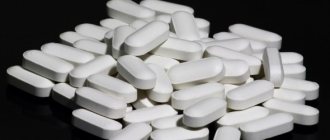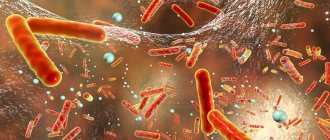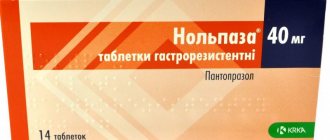Let's look at the side effects of Fluconazole. Thrush, which doctors call candidiasis, is a fungal disease that affects the mucous membranes of the genital organs in adults and the oral cavity in children. It occurs in both sexes and often requires mandatory treatment. This disease goes away on its own only if it occurs due to dysbiosis of the genital organs, which is provoked by taking large dosages of antibiotics. To treat such a disease, today there are different drugs in pharmacies, and one of them is Fluconazole. We will describe the side effects of the drug below.
pharmachologic effect
The abstract contains information that the drug acts as an antifungal agent, specifically inhibiting the synthesis of fungal sterols . Belongs to the class of triazole compounds .
There is a specific effect on fungal enzymes that depend on cytochrome P450 . The active substance demonstrates activity against a variety of strains of Candida spp. (including effective against visceral candidiasis), Cryptococcus neoformans (including effective against intracranial infections), Trichophytum spp, Microsporum spp. The drug is also active against microorganisms that are causative agents of endemic mycoses: Coccidioides immitis, Hystoplasma capsulatum, Blastomyces dermatitidis.
The drug stops the conversion of fungal cells into lanosterol into ergosterol .
Under its influence, the permeability of the cell membrane increases, the process of its growth and replication is inhibited. It is highly selective for cytochrome P450 of fungi, but in the human body it almost does not inhibit these enzymes. Does not demonstrate antiandrogenic activity.
Side effects sometimes observed while taking the drug
A side effect differs from a side effect in that the connection between the event and the use of a specific drug has not been proven. However, manufacturing companies are required to record everything that happens to the patient (control group) during treatment and include it in the instructions:
- Convulsions;
- Skin rashes, Stevens-Johnson syndrome, toxic skin lesions (epidermal necrolysis);
- Exfoliative dermatitis in patients with AIDS and malignant tumors;
- Violation of the composition of cellular elements of the blood: leukopenia (decreased number of leukocytes), thrombocytopenia (decreased number of platelets);
- Increased cholesterol
Fat metabolism disorders: increased cholesterol levels (hypercholesterolemia), triglycerides;
- Decreased potassium levels.
Pharmacokinetics and pharmacodynamics
Wikipedia indicates that after oral administration, the drug is actively absorbed into the human gastrointestinal tract. In plasma, the concentration of the active substance is more than 90% of the level that is observed if intravenous administration is practiced. The absorption of the substance is not affected by food intake, so it does not matter how you take it, before or after meals. After taking the medicine orally, the highest concentration in the blood occurs after 0.5–1.5 hours. The half-life from the blood is 30 hours. That is, you can take the product once a day. For vaginal candidiasis, a single dose of the drug is sufficient, for which one tablet or another form of the drug is used.
11–12% of the active substance binds to blood plasma proteins. When the drug begins to work depends on the treatment regimen. If you take the medicine once daily, then a stable concentration of the active component in the human blood is observed on the fourth or fifth day (in 90% of people). If on the first day of treatment the patient is given a double daily dose, then this effect is observed already on the second day of treatment.
Penetrates into all fluids in the body. It is excreted from the body through the kidneys, approximately 80% is excreted unchanged.
Overdose
Against the backdrop of an overabundance of the drug in the body, hallucinations and paranoid behavior may occur. The first aid in this case should be gastric lavage. Treatment should be symptomatic. It is worth keeping in mind that Fluconazole can be excreted in the urine, and forced diuresis can accelerate the elimination of this medication. Performing a hemodialysis session for three hours helps reduce the level of the drug in the blood plasma by an average of fifty percent.
Indications for use
The following indications for use of the drug are determined:
- infectious diseases caused by candida (disseminated candidiasis, generalized candidiasis, other forms of invasive candidiasis;
- candidiasis of the mucous membranes (including the pharynx, oral cavity, esophagus);
- candiduria;
- chronic atrophic and mucocutaneous candidiasis of the oral cavity (develops in people with dentures);
- non-invasive bronchopulmonary infections;
- genital candidiasis (vaginal candidiasis in acute form and with relapses);
- prevention of recurrent manifestations of vaginal candidiasis (if the disease develops three times a year), candidal balanitis ;
- cryptococcal infection, cryptococcal meningitis;
- onychomycosis;
- dermatomycosis (including mycoses of the body, feet, groin area);
- pityriasis versicolor;
- endemic mycoses deep;
- prevention of the development of fungal infections in people who have undergone cytostatic or radiation therapy.
General negative reactions"
So, the medical drug in question can cause some undesirable manifestations in the functioning of both the male and female body. Common side effects from taking Fluconazole are headache, along with nausea, diarrhea, vomiting, abdominal pain and rash.
Among other things, both women and the stronger sex may experience increased levels of aspartate aminotransferase, alanine aminotransferase, and alkaline phosphatase in the blood. The use of this drug may result in side effects from the circulatory system in the form of anemia, agranulocytosis, leukopenia, neutropenia and thrombocytopenia.
It is also worth noting that the use of Fluconazole for the immune system of the human body is sometimes fraught with anaphylaxis. A metabolic disorder, for example, decreased appetite in combination with hypertriglyceridemia, hypercholesterolemia and hypokalemia, cannot be ruled out. Side effects of Fluconazole in women and men can be quite unpleasant.
Some patients complain that they are worried about mental disorders in the form of insomnia and drowsiness. Regarding the nervous system, it is worth noting that doctors recorded complaints from patients about headaches, convulsions, dizziness, tremors, paresthesia and taste disturbances.
The hearing organs, according to experts, can react with such a side effect as vertigo. A negative effect of the drug in question on the cardiac and vascular systems was also recorded, due to which patients of both sexes may experience ventricular paroxysmal tachycardia of the “pirouette” type, along with prolongation of the QT interval.
The side effects of Fluconazole do not bypass the digestive system. For example, patients sometimes complain of dry mouth, nausea, diarrhea, vomiting, constipation, abdominal pain, flatulence, dyspepsia, and the like. The hepatobiliary system is able to respond by increasing the levels of aspartate aminotransferase, alanine aminotransferase and bilirubin alkaline phosphatase. Cholestasis is also likely along with jaundice, liver failure, hepatocellular necrosis, and hepatitis.
As stated in the annotation for Fluconazole tablets, rash, dermatitis, itching, as well as reactions in the form of urticaria, facial swelling, alopecia and exfoliative dermatitis may appear. In addition, complaints about the presence of increased sweating, the appearance of toxic epidermal necrolysis, generalized exanthematous pustulosis in acute form and angioedema are rarely recorded.
For the skeletal as well as the muscular system, the use of Fluconazole is sometimes fraught with myalgia. Patients also repeatedly noted general disorders in the form of increased fatigue, malaise, asthenia, fever, and the like. Among children, the nature and frequency of adverse reactions in the clinical studies performed is comparable to adults.
Side effects of Fluconazole in men and women occur more often due to an overdose.
Contraindications
There are the following contraindications for the use of this medicine:
- manifestation of high sensitivity to fluconazole or to azole compounds, which are similar in chemical structure to fluconazole;
- concurrent use of terfenadine if the patient receives a dose of Fluconazole 400 mg per day or more;
- concomitant use of astemizole or any other drugs that increase the QT interval;
- age up to 4 years.
It should be taken with caution in case of liver failure, also kidney failure, when a rash appears in people suffering from a superficial fungal infection, in potentially pro-arrhythmogenic conditions in people with risk factors (organic heart disease, taking medications that provoke the development of arrhythmia , electrolyte imbalance). How to take Fluconazole in this case, you should definitely ask a specialist.
Studies on the effect of the drug on pregnant women
High doses of fluconazole negatively affect weight gain in rabbits and increase the frequency of miscarriages. This applies to dosages similar to 20 times the therapeutic dose for humans. With adequate amounts of fluconazole administered to the animal weight, no negative effects from the fetus or mother were identified. The existing negative effects when prescribing high doses are attributed to the moderate effect of the drug on hormonal levels.
Pregnancy
For pregnant women, fluconazole is indicated only for severe infections that threaten the life of the mother and/or fetus. Only the attending physician can take responsibility, with a clear comparison of the risks and the expected effect. There are no direct studies of the use of fluconazole in pregnant and lactating women.
There is evidence of developmental abnormalities in children whose mothers were treated with fairly high doses of the drug (for severe fungal diseases), although a direct connection between these facts has not been proven. According to FDA standards, the risk to the fetus is assessed as C, i.e. speculative.
During the mother's therapy, breastfeeding should be stopped, because... fluconazole is contained in breast milk in the same concentrations as in the blood (as already mentioned, it penetrates well into all liquids).
Instructions for use of Fluconazole (Method and dosage)
The drug is prescribed for oral administration (Fluconazole Stada capsules, Fluconazole Teva, tablets) or for intravenous administration. There are also other forms of medication, the active ingredient of which is fluconazole - suppositories, ointment.
The solution is infused at a rate not exceeding 10 ml per minute.
Fluconazole tablets, instructions for use
The dosage of the drug depends on the disease and its severity.
Patients with disseminated candidiasis and candidemia are prescribed 400 mg on the first day, then the dose should be reduced to 200 mg. For the treatment of generalized candidiasis, are advised to take 6–12 mg per 1 kg of weight per day.
For patients with oropharyngeal candidiasis , 50 mg to 100 mg of Fluconazole is indicated once a day, the treatment period is 1-2 weeks.
People suffering from atrophic candidiasis of the oral mucosa are advised to take 50 mg once a day. Treatment is combined with the use of local products for the treatment of prostheses. When treating other candidiasis infections of the mucous membranes, 50–100 mg per day is prescribed, the period of therapy is from 14 to 30 days.
In order to prevent the development of relapses of oropharyngeal candidiasis in people with AIDS , 150 mg once a week is indicated. If mucosal candidiasis develops in children, the dose should be taken at the rate of 3 mg of drugs per 1 kg of weight per day. On the first day, you can give your child a double dose.
Patients with cryptococcal infections and cryptococcal meningitis are usually prescribed 200–400 mg of drugs once a day. On the first day, 400 mg of the drug is indicated. The duration of treatment can be from 6 to 8 weeks. Children are prescribed a dose of 6–12 mg per 1 kg of weight per day.
People suffering from infectious skin diseases are recommended to prescribe 150 mg once a week or drink 50 mg of the drug once a day. Treatment should be continued for 2-4 weeks. For men and women with mycosis of the feet , longer therapy is sometimes required - up to 6 weeks.
Patients with pityriasis versicolor are recommended to take 300 mg once a week, the treatment period is 2 weeks. Depending on the intensity of your symptoms, your doctor may prescribe another dose of Fluconazole in the third week. It is possible to use another treatment regimen - 50 mg 1 time per day, the treatment period is two to four weeks.
Patients with onychomycosis are prescribed 150 mg once a week. Therapy should continue until a healthy nail grows in place of the diseased nail.
People suffering from deep endemic mycosis sometimes undergo a long course of treatment with the drug, which can last up to two years. The dose per day is 200–400 mg.
Instructions for the use of fluconazole for thrush stipulate that for vaginal candidiasis, a single dose of the drug is taken, its dose is 150 mg.
As a rule, Fluconazole for thrush is effective after a single dose. But your doctor will tell you more about how to take Fluconazole for thrush after an individual consultation. Before determining how to take any medicine for thrush if you have thrush, the specialist takes into account the causes of the disease and the individual characteristics of its course. For chronic thrush, Fluconazole Teva or other types of the drug are prescribed to prevent relapses at a dose of 150 mg once a month. The product should be used for 4-12 months. For the purpose of prevention, capsules are prescribed in a dose of 50–400 mg once a day, depending on how high the risk of the disease is. For children with thrush, Fluconazole tablets are prescribed at a dose of 3–12 mg of medication per 1 kg of weight per day. How much to drink depends on the severity of the infection.
For balanitis, the treatment regimen for men is as follows: the drug should be taken in a dose of 150 mg once.
Some patients are interested in whether it is possible to take pills or capsules during menstruation. According to experts, you can take Fluconazole at any time, regardless of your monthly cycle. How long it takes for the medicine to help depends on the intensity of the symptoms of the disease.
Side effects of Fluconazole in women
It must be said that, provided the correct dosage and dosage regimen is used, the medication in women usually does not provoke serious complications and adverse reactions. Only fifteen percent of patients may experience allergic reactions to the main component (in this case, they will most likely manifest themselves in the form of urticaria, erythema, and rash).
What other side effects of Fluconazole have been observed in women? Among other things, disruptions in the functioning of the digestive system are possible. Extremely rarely, as in men (one to two percent of cases), women experience nausea along with headache, dizziness and liver damage.
If you strictly follow the instructions for use, there are practically no side effects from Fluconazole.
Interaction
Before starting treatment, it is important to know not only what Fluconazole in tablets and other forms helps with, but also about the interaction of drugs with other drugs.
When taking Warfarin , the prothrombin time of fluconazole becomes longer.
With simultaneous administration of hypoglycemic oral agents belonging to the group of sulfonylurea derivatives, the half-life of Fluconazole increases. As a result, there is a possibility of hypoglycemia.
With simultaneous administration of Phenytoin, a clinically significant increase in the concentration of phenytoin is observed.
With simultaneous repeated use of hydrochlorothiazide, an increase in the concentration of fluconazole in the blood is observed. There is no need to change the dosage.
With simultaneous treatment with Rifampicin, AUC decreases by 25%. The half-life is also reduced by 20%. In some cases, the doctor decides to increase its dose.
When treating with Fluconazole, monitoring the concentration of cyclosporine in the blood is recommended.
If the patient is simultaneously receiving high doses of Theophylline, it is important to consider the possibility of Theophylline overdose.
It is contraindicated to take a dose of more than 400 mg per day in combination with Terfenadine.
When taking Cisapride simultaneously, negative side effects from blood vessels and the heart may occur, in particular, paroxysms of ventricular tachycardia .
If Fluconazole and Zidovudine , the patient should be monitored by a doctor, as the side effects of Zidovudine may increase.
If treatment with Astemizole , Cisapride , Tacrolimus , Rifabutin or any other drug that is metabolized by the cytochrome P450 system is simultaneously prescribed, the concentration of these drugs in the blood may increase.
The absorption of Fluconazole is not affected by simultaneous administration of Cimetidine or antacids.
Use in men
In the strong half of humanity, thrush, although extremely rare, can still occur. In this regard, this medication can also come to the aid of men. To carry out treatment, you will need to take medication according to certain regimens corresponding to specific forms of the disease:
- In the case of an illness that occurs for the first time and is not complicated by a sexually transmitted disease, this drug is prescribed to men at a single dose of 150 milligrams.
- Against the background of long-term mild thrush, the presented drug is taken once a week, a capsule in a dose of 150 milligrams.
- If there is a risk of infection as a result of unprotected sexual contact with a partner who suffers from candidiasis, it is necessary to apply the suspension to the mucous membrane of the penis once.
To prevent thrush, men should use this drug once a month. At risk there are individuals among whom there is increased body weight in combination with diabetes, as well as HIV.
special instructions
If liver dysfunction is observed during treatment, constant monitoring by a physician is important. If signs of liver damage are observed, the medication should be discontinued.
When using the medicine topically for men and women, it should be taken into account that people with AIDS are more likely to develop a variety of skin reactions.
It is necessary to take into account not only how long it takes for Fluconazole to act, but also the fact that if treatment is stopped prematurely, relapses may develop. Therefore, it is important to completely complete the prescribed treatment regimen. It is important to take this into account when using Fluconazole for nail fungus, since reviews for nail fungus indicate that if treatment is stopped prematurely, a relapse of the disease may occur.
Many patients have a question about whether Fluconazole is an antibiotic or not? Please note that this is an antifungal agent, not an antibiotic.
Whether men can take this drug depends on the diagnosis. Fluconazole for men is prescribed for fungal infections; it must be taken exactly as prescribed.
Side effects of Fluconazole in men
It is worth noting that this medication is not suitable for all patients. The fact is that in a number of clinical cases it can provoke certain side effects. Among male patients, the following complaints are quite likely:
- The appearance of abdominal pain (this is how gastralgia can manifest itself).
- The occurrence of increased fatigue and dizziness, as well as weakness.
- Development of arrhythmia or tachycardia.
- Calcium leaching is also likely.
- Symptoms include headache, nausea, and less commonly, vomiting.
- Possible stomach upset.
- The appearance of hepatotoxicity, anaphylactic shock.
- The occurrence of skin rashes of various localizations.
As a rule, side effects from Fluconazole in men are only temporary; they disappear on their own after discontinuation of the described medication. Most often we are talking about allergic reactions caused by the body's excessive sensitivity to the active ingredients.
Fluconazole analogs
Level 4 ATC code matches:
Medoflucon
Vfend
Itracon
Mikosist
Irunin
Mikomax
Orungal
Mycoflucan
Sporagal
Orungamin
Flucostat
Difluzol
Rumicosis
Futsis
Vero-Fluconazole
Kandizol
Kanditral
Itraconazole
Diflazon
Fluconazole analogues are products with a similar active ingredient. The price of analogues depends on the manufacturer and the form of release of the drug. There are a number of analogues of this drug: Diflazon , Diflucan , Vero-Fluconazole , Mikomax , Flucostat , Fluconazole Teva , Fluconazole Stada , etc.
Which is better: Fluconazole or Diflucan?
Often patients compare two drugs with antifungal action - Fluconazole and Diflucan . What is the difference between these medicines? Both drugs are based on the active substance fluconazole. Diflucan is available in tablets of 50 mg, 100 mg, 150 mg, and other forms. But the price of Diflucan is much higher.
Flucostat or Fluconazole - which is better?
Speaking about how Flucostat from Fluconazole, it should be noted that both drugs contain the same active substance. Flucostat is a more expensive medicine. What is the difference between these medications, and which one is best prescribed in a particular case, is determined by a specialist. As a rule, Fluconazole is more often prescribed when prophylaxis is necessary for cancer patients after radiation and chemotherapy.
Fluconazole or Nystatin - which is better?
Nystatin is an antifungal drug, an antibiotic, active against candida .
Under the influence of Nystatin, the permeability of the membrane of fungal cells is disrupted, which contributes to disruption of their growth and reproduction. Which drug is preferred in a particular case depends on the diagnosis and the doctor’s prescription.
What is this medicine?
Fluconazole is characterized, first of all, as an antifungal drug that actively fights the causative agent of thrush. This medicine today is one of the strongest antifungal medications with a wide spectrum of effects. Its effectiveness is based on the fact that it inhibits fungal enzymes, which provide this pathogen with adequate nutrition, promoting its reproduction and growth.
However, one should not forget about the side effects of Fluconazole. Taking the product leads to the death of the fungus and the rapid restoration of healthy microflora. The medicine is produced in five forms, and the doctor, after examining the patient, at his own discretion selects the best option to achieve a quick therapeutic result. Today, pharmacies offer a choice of drug formats in the form of tablets, syrup, capsules, powder for suspensions and solution for injection.
The injection option is mainly prescribed for severe thrush. Fluconazole is often used as part of complex therapy, which includes cleansing douching, taking anti-inflammatory drugs and the drug itself.
Reviews about Fluconazole
Due to the high fungicidal activity of this drug, patient reviews and doctors' reviews of Fluconazole are mostly positive. Patients, leaving reviews about Fluconazole Teva, as well as reviews about Fluconazole Stada on the forums, write that the drug helps to quickly and effectively eliminate the symptoms of fungal diseases. Users mention that the tablets are relatively inexpensive, but at the same time they allow you to completely get rid of nail fungus and other unpleasant diseases. In some cases, it is enough to take Fluconazole 150 mg once to completely overcome the symptoms of the disease.
Very often, women write positive reviews about Fluconazole for thrush . It is noted that the medicine not only relieves thrush, but also helps prevent relapses of the disease.
Effect of fluconazole on the liver (hepatotoxicity)
Sometimes fluconazole causes serious liver complications, including death. When the drug is discontinued, the symptoms of liver damage subside. For this reason, during long courses of treatment with fluconazole, the doctor must periodically prescribe liver tests (AST, ALT, etc.).
In severe cases, the hepatotoxic effect manifests itself in the form of hepatitis, impaired bile outflow (cholestasis), and acute liver failure. All these sad outcomes were observed mainly in patients with HIV, malignant neoplasms, and severe forms of tuberculosis.
This may be due to the parallel use of heavy specific antibiotics: isoniazid, rifampicin, phenytoin, pyrazinamide.
Fluconazole price, where to buy
The price of Fluconazole tablets depends on the packaging and manufacturer. You can buy Fluconazole in Moscow at prices ranging from 10 to 290 rubles. Capsules 150 mg (1 piece in a package) can be bought for 10-200 rubles. Capsules 50 mg can be purchased at a price of 25 rubles (7 pcs in a package). The cost of Fluconazole Teva 150 mg is 190-220 rubles per pack. (1 PC.).
The price of Fluconazole in Ukraine (Odessa, Kyiv, etc.) is 17-20 hryvnia (50 mg capsules, 7 pcs.). Price Fluconazole 150 mg in Kharkov, Zaporozhye, Dnepropetrovsk, etc. - on average 30 hryvnia (2 pcs per package). 150 mg tablets can be bought in Ukraine for an average of 20 hryvnia.
How much tablets for thrush cost in Kazakhstan and Belarus depends on the packaging and manufacturer. In Minsk, you can buy 150 mg capsules for 10,000 – 103,000 rubles, depending on the number of tablets in the package and the manufacturer.
How much other forms of release of the drug with fluconazole (suppositories, ointment, cream) cost also depends on the manufacturer.
- Online pharmacies in RussiaRussia
- Online pharmacies in UkraineUkraine
- Online pharmacies in KazakhstanKazakhstan
ZdravCity
- Fluconazole capsules 150 mg 2 pcs. Ozone LLC
45 rub. order - Fluconazole-Stada capsules 150 mg Hemofarm LLC
69 RUR order
- Fluconazole-Akrikhin caps. 150 mg №1 NOT DEFINED
69 RUR order
- Fluconazole capsules 50 mg 7 pcs. JSC Kanonpharma Production
66 RUR order
- Fluconazole Medisorb capsules 150 mg 2 pcs. JSC Medisorb
166 RUR order
Pharmacy Dialogue
- Fluconazole Vertex (caps. 150 mg No. 2)Vertex
51 RUR order
- Fluconazole-Teva capsules 150 mg No. 1Teva
RUB 171 order
- Fluconazole-OVL capsules 150 mg No. 2Obolenskoye pharmaceutical pred.
61 rub. order
- Fluconazole-Teva capsules 50 mg No. 7Teva
RUB 272 order
- Fluconazole Stada (caps. 150 mg No. 1) Hemofarm LLC
64 RUR order
show more
Pharmacy24
- Fluconazole-Darnitsa 0.15g N2 capsules PrAT" Pharmaceutical company "Darnitsa", Ukraine
28 UAH. order - Fluconazole-KR 50 mg No. 7 capsules PAT"Khimpharmzavod"Chervona Zirka", Kharkov, Ukraine
15 UAH order
- Fluconazole-Darnitsa 150 mg No. 3 capsules PrAT" Pharmaceutical company "Darnitsa", Ukraine
40 UAH order
- Fluconazole 200 mg 100 ml No. 1 solution Eurolife Healthcare Pvt. Ltd., India
83 UAH order
- Fluconazole 100 mg N10 tablets PrAT "Technolog", Uman, Cherkasy region, Ukraine
32 UAH order
PaniPharmacy
- FLUCONAZOL capsule Fluconazole capsules 0.15g No. 2 Ukraine, Zdorovye LLC
33 UAH order
- Fluconazole caps. 150mg №2
31 UAH order
- FLUCONAZOL tablets Fluconazole tablets 150 mg No. 2 Ukraine, Tekhnolog ChAO
29 UAH order
- FLUCONAZOLE capsule Fluconazole forte caps. 200 mg No. 2 Ukraine, Health LLC
47 UAH order
- FLUCONAZOL capsule Fluconazole capsules 0.05g No. 10 Ukraine, Darnitsa ChAO
28 UAH order
show more
Release form and composition
Dosage forms of the drug:
- capsules: hard gelatin, the colors of the cap and body, the appearance of the contents of the capsules depend on the manufacturer (1, 2, 4, 7, 8, 10, 14, 16, 20, 28 or 40 pcs. in contour cell packaging, polymer bottles, polymer jars, dark glass jars, packed in cardboard boxes);
- film-coated tablets: round, biconvex, white with a cream or white shell (at a dose of 50 and 100 mg - 10 pcs., at a dose of 150 mg - 1 or 2 pcs. in blister packs made of PVC/Al foil, 1 package in a cardboard box);
- solution for infusion: slightly colored or colorless transparent liquid (50 or 100 ml in vials or bottles, 1, 2, 5 or 10 vials, 10, 15, 24, 36, 40, 42, 48, 72, 80, 84 or 96 bottles per pack).
1 capsule contains:
- active ingredient: fluconazole – 50, 100 or 150 mg;
- auxiliary components: composition depends on the manufacturer.
1 tablet contains:
- active ingredient: fluconazole – 50, 100 or 150 mg;
- auxiliary components: potato starch, lactose, povidone 25, colloidal silicon dioxide, magnesium stearate;
- film shell: hypromellose, titanium dioxide, polyethylene glycol 6000, talc, polysorbate.
100 ml of solution contains:
- active ingredient: fluconazole – 200 mg;
- auxiliary components: sodium chloride, sodium hydroxide/hydrochloric acid (to adjust pH), water for injection.








